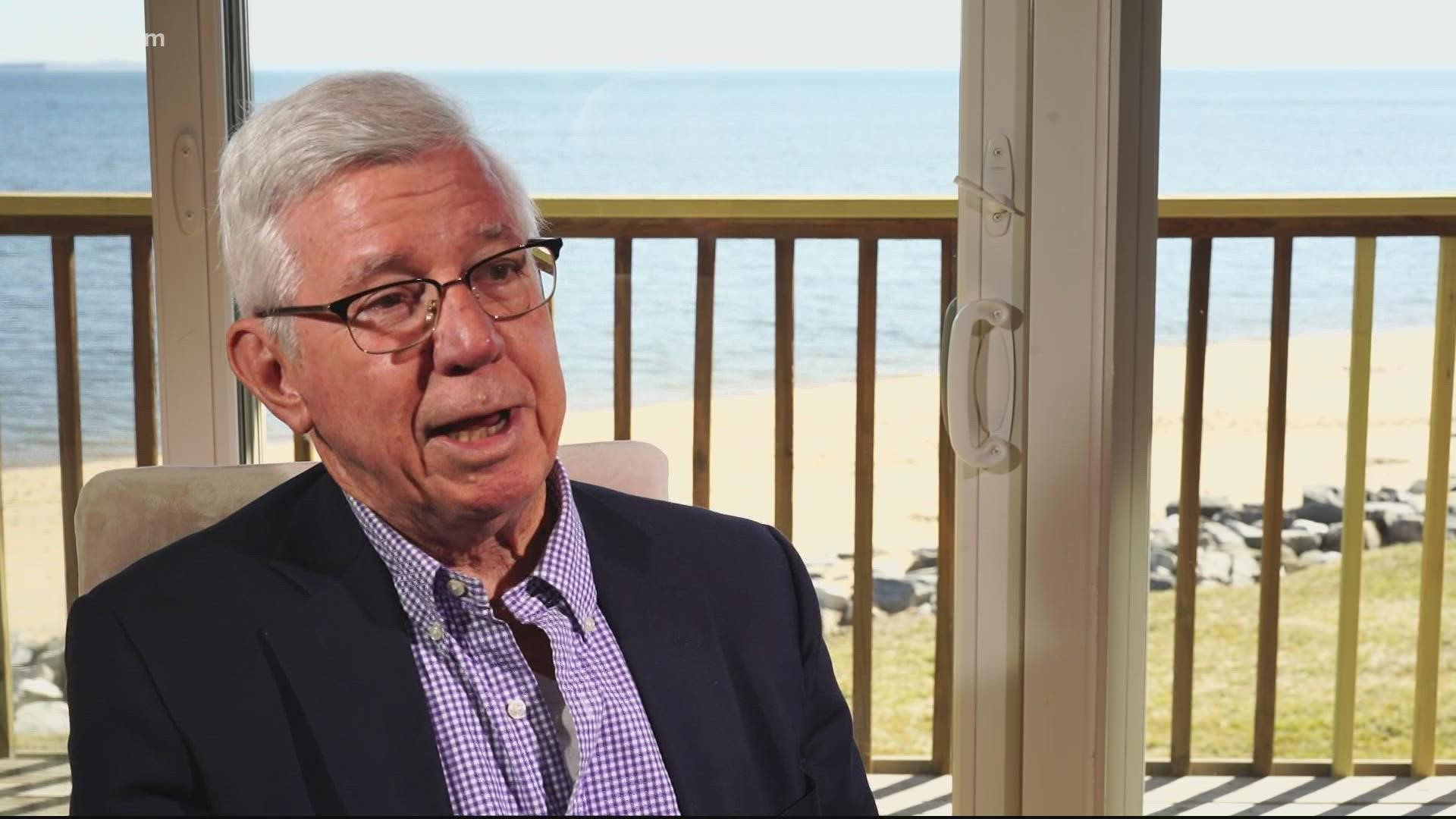ANNAPOLIS, Md. — More than 20 years ago, former Maryland Gov. Parris Glendening helped orchestrate a move that will go down in infamy with Washington football fans. Glendening won a controversial tug of war to move the Washington football stadium from D.C. to Prince George's County.
It was not Glendening’s proudest moment in office, now saying he knew at the time that the site, known today as FedEx Field, was destined for mediocrity "at best."
"I knew it was more likely to be a disaster," Glendening said of the 200-acre plot of land in Landover, Maryland.
In many ways, Glendening’s honesty now is a mea culpa of sorts for a move that he helped orchestrate. In 1997, Glendening was cheered by Marylanders for one of the biggest bombshells in Washington sports history. He managed to lure the team away from the home it had known for more than 30 years, RFK stadium in Southeast D.C., for a brand-new stadium in Prince George’s County.
“I mean look, the shopping center across the street, that couldn't even make it, it closed up,” Glendening said. “Having a big traffic jam 10 times a year [on game days] is not going do anything for business.”
In fact, in the late 1980s when then-owner Jack Kent Cooke first threatened to move the team out of D.C. if he couldn’t reach a new stadium agreement with the District, Glendening, who was county executive of Prince George's County at the time, urged Cooke to keep the stadium in the District.
But by the mid-'90s Glendening had ascended to governor, and Cooke still needed a new stadium for his team. The owner zeroed in on a 200-acre site right off I-95 in Landover known as Wilson Farm. For the first time, Cooke had the full support of Gov. Glendening, who had flipped on his position of opposing a new Washington football stadium in Maryland.
So what changed?
Around the same time, the original Cleveland Browns franchise was planning a move as well, this one to Baltimore.
“I made it clear that Baltimore would no longer be used as leverage for another NFL team to secure a better deal in other cities,” Glendening told a crowd in 1995 at the announcement of the Browns relocation to Baltimore.
To close the deal, Glendening promised then Browns owner Art Modell a new downtown stadium in Baltimore. But the governor quickly learned, despite his misgivings about the site for Washington’s proposed new stadium, that he didn’t have the votes to get one passed by the Maryland legislature without the other.
“I got a call from one of the senators to chair the Prince George's County delegation, which I had all seven of the eight votes lined up for the new stadium in Baltimore," Glendening said. “And he said, 'we can't vote for the Ravens.' And I said, 'what do you mean, you can't vote?' So, I met immediately with him. And he said, 'listen, we're senators from Prince George's County. We have the possibility to bring an NFL team to Prince George's County. And you're asking us to vote for an NFL team in Baltimore, but not here? We'd be dead. We'd all be out of office, we can't do it.'"
So despite his misgivings about the future FedEx Field site, Glendening said he “acquiesced” to the wishes of the Prince George's County delegation to back both new stadiums, not just the one in Baltimore.
“Backed down,” Glendening said.
And not one, but two new professional football stadiums in Maryland were born.
The Ravens stadium, now known as M&T Bank Stadium, has been a huge success. It's packed every gameday, filling downtown Baltimore restaurants, bars and hotels.
FedEx Field, however, has spurred no growth or excitement by fans or the surrounding community.
Glendening said he still struggles with whether or not he regrets backing a stadium he knew at the time was destined to fail.
“I’ve thought about that many times and the question comes, would the vote have failed for the Ravens?" he said. "And I think the answer is yes.”
Now, as Prince George's County tries to hang on to the Washington Commanders stadium with proposals for renovations to FedEx Field or a new stadium near National Harbor, while D.C. fights to bring the team back home and Virginia moves closer to a billion-dollar bond plan to lure the Commanders to the Commonwealth, Glendening has a warning.
“I would ask my colleagues, and I know many of them, not to be overwhelmed by the status of having an NFL team in your jurisdiction,” Glendening said. “Instead, say, 'will this team be a positive impact for the citizens of our jurisdiction in the metropolitan area?' And I will tell you without any hesitation, the location for the Orioles, for the Ravens for the Washington Capitals? The answer is yes. This is good for the community. The location of the Washington Football Team? This was horrible for the community and never should have been there.”
As stadium deals go, FedEx Field was far from the worst for taxpayers, with the state contributing roughly $60 million to improve roads and infrastructure around the site with Cooke picking up the full $180 million tab to build the stadium itself.
By comparison, Maryland taxpayers kicked in $200 million to build the Ravens stadium.

